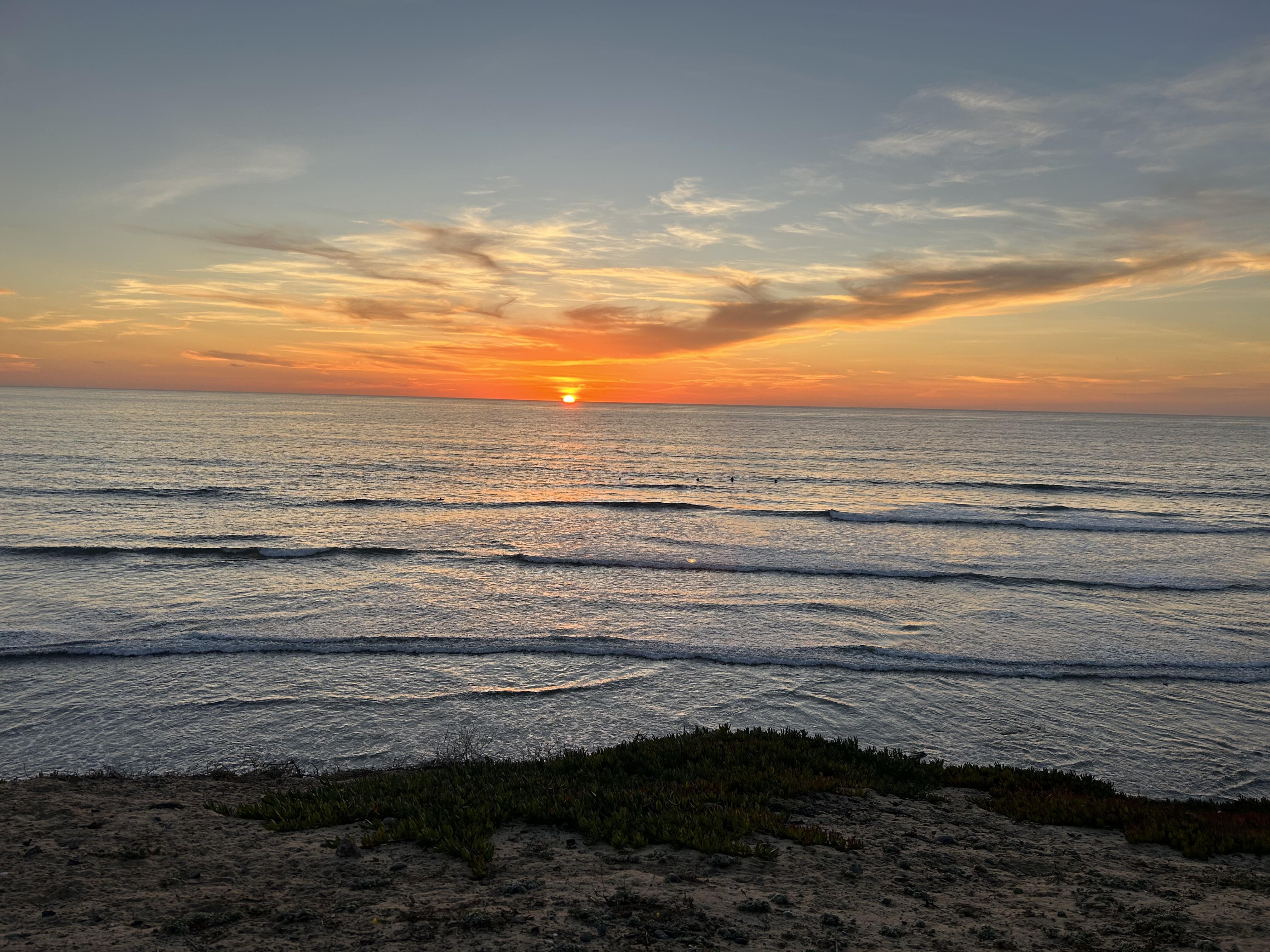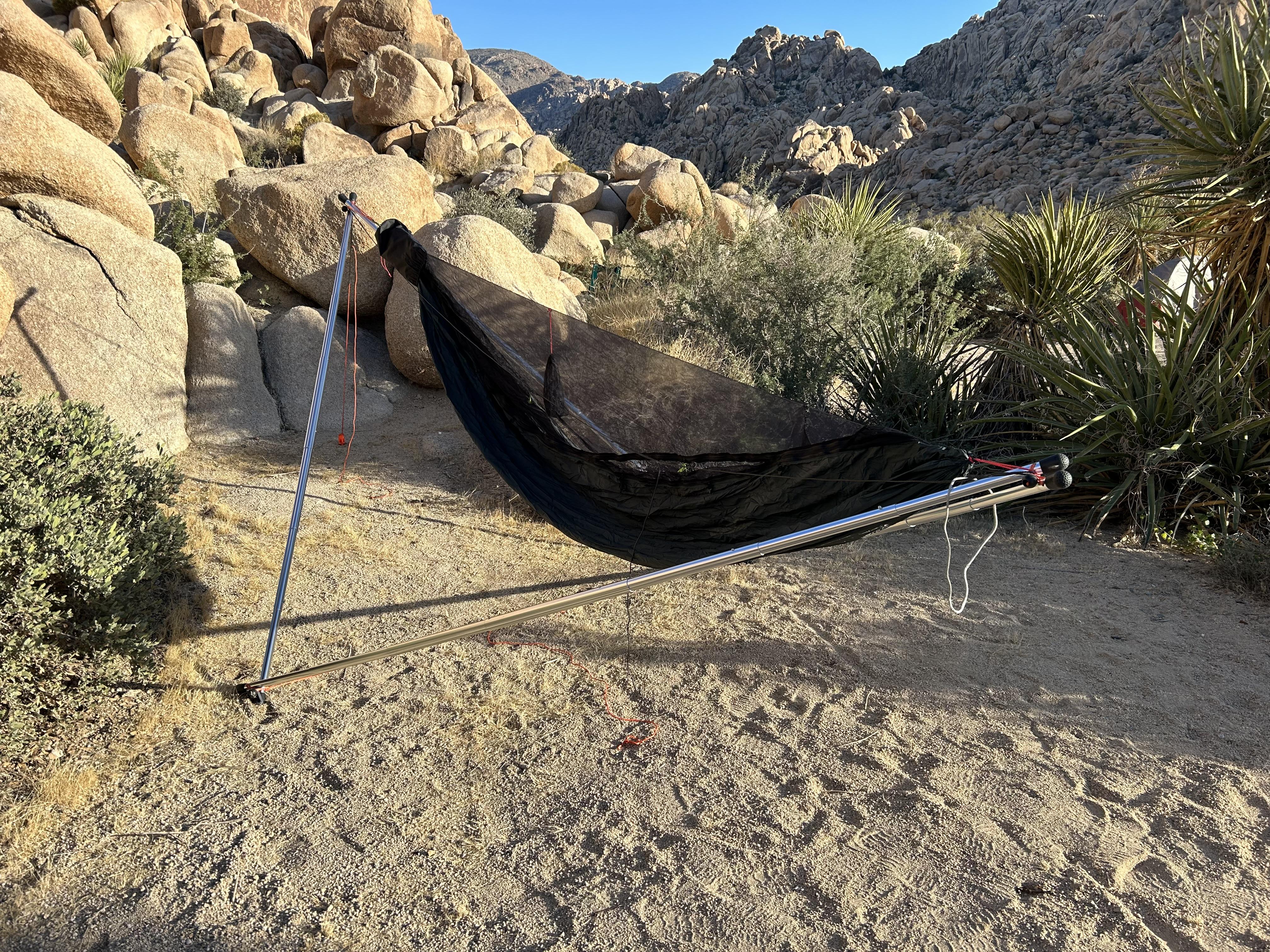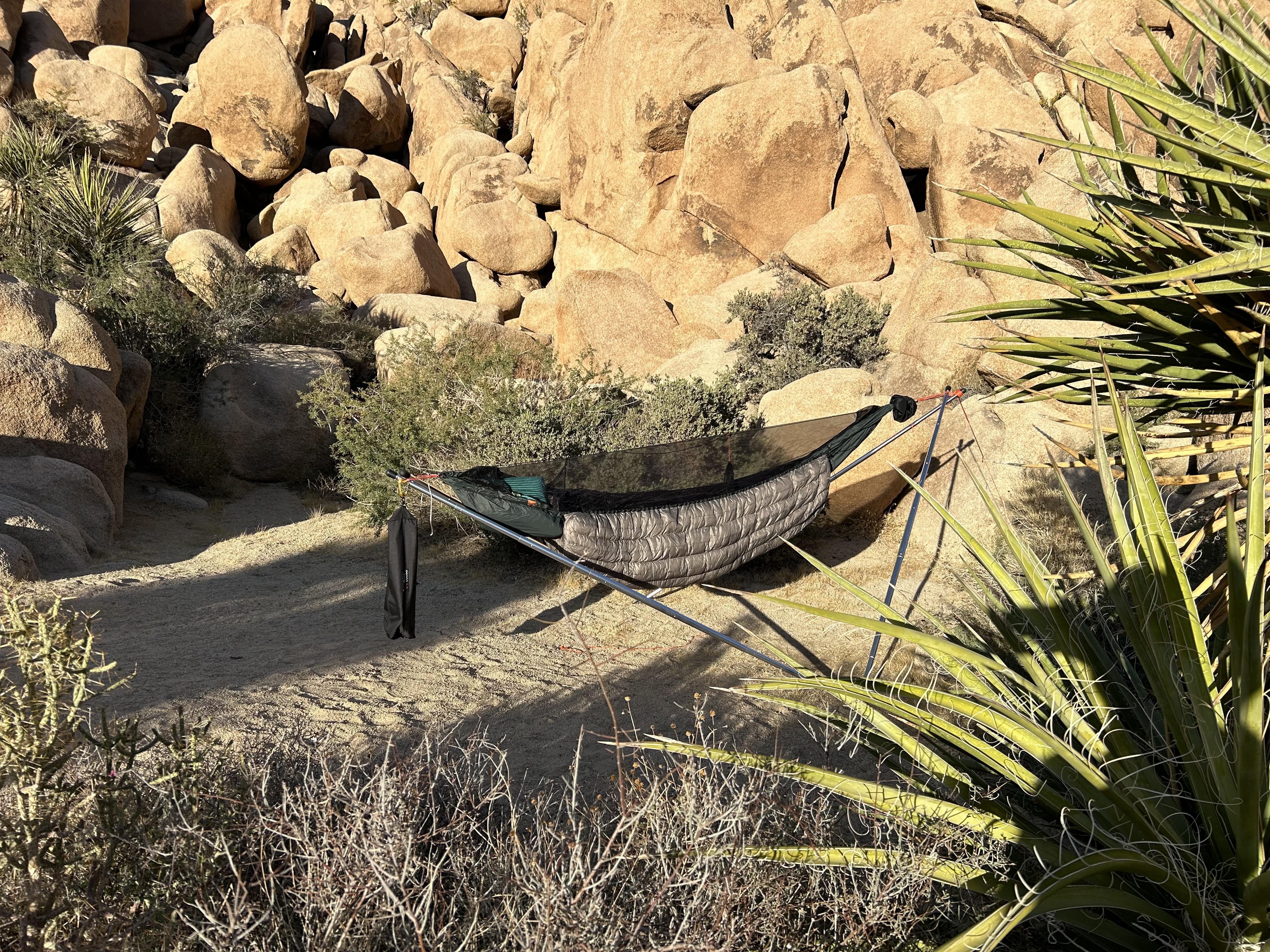Topic
Dew/mist mitigation
Forum Posting
A Membership is required to post in the forums. Login or become a member to post in the member forums!
Home › Forums › General Forums › Hammock Camping › Dew/mist mitigation
- This topic has 18 replies, 9 voices, and was last updated 1 year, 3 months ago by
 Bob Shuff.
Bob Shuff.
-
AuthorPosts
-
Dec 4, 2023 at 8:47 pm #3794601
I was camping at the beach recently and there were clear skies and no chance of rain. Normally I would skip the tarp, but almost immediately I noticed moisture condensing on my hammock and underquilt. I had a minimal tarp so I put it up, but I’m wondering what more I could do, especially since it could have a been a lot more if mist or low night/morning clouds had formed as they often do.
Any suggestions to prevent the moisture getting on the hammock and quilts? I was car camping and it wasn’t that cold. I didn’t unpack my top quilt until bedtime and I also had an UQ protector that probably helped some. I was thinking maybe a larger tarp put up first might have helped. Other suggestions?
Dec 4, 2023 at 9:21 pm #3794602Generally, I think what you described is an unavoidable certainty when camping at the beach.
Dec 4, 2023 at 10:23 pm #3794604In my experience the single most significant factor affecting condensation is visibility to a cloudless sky. Outer space is cold, and if your sleeping bag/quilt is facing it you can usually expect condensation. The way to stay dry is to get under a tent or tarp so the condensation happens on that instead. It can also help to camp under a forest canopy–not always available at the beach.
Dec 5, 2023 at 9:43 am #3794622Here’s the classic TarpTent video on condensation and ways to mitigate it. Applies equally to hammock campers.
 Dec 5, 2023 at 11:10 am #3794624
Dec 5, 2023 at 11:10 am #3794624That’s a good video except that it doesn’t mention night sky radiation, which is a very significant effect. The vid mentions camping under forest canopy, but attributes the benefit to a warmer microclimate, which is only part of the effect. It also mentions that moving air keeps your tent surfaces warmer, but offers no reason why that would be…one reason is that moving air exchanges heat better and the air is warmer than the tent when the tent is looking at a clear night sky.
I’ve seen shallow puddles with a thin layer of ice on them in the morning after a night that never got cooler than 40F. Don’t underestimate night sky radiation.
Dec 5, 2023 at 12:41 pm #3794629Yeah, same here, I primarily get condensation when the sky is clear – radiative heat loss
Dec 6, 2023 at 5:52 pm #3794754Dew can be a big problem for telescopes. This article is focused on the dew point temperature.
Dec 7, 2023 at 7:06 am #3794799if you’re using a telescope you are most likely exposed to total clear sky, so the worst radiative heat loss
that dew/mist shield would prevent most of the radiative heat loss, so less dew/frost
Dec 7, 2023 at 12:53 pm #3794819Todd – you are right that the video doesn’t explain radiative heat loss.
I used to own a 10″ Dobsonian and remember nights where I had to use an eyepiece dew heater, and I even had a cylindrical cardboard extension to the scope itself to help right dew formation.
For most people, knowing that a “good site” is underneath trees may be enough. I have doubts that some of my hiking companions would grasp radiative cooling… or would even care.
Dec 7, 2023 at 1:20 pm #3794822For most people, knowing that a “good site” is underneath trees may be enough.
Maybe, but it’s also worth knowing that a wide open site can be just as good on a cloudy night. And that the times when cowboy camping is most desirable (fall asleep counting stars) are times with elevated condensation risk.
Dec 7, 2023 at 9:37 pm #3794887I have a fabric cover (the Dutch Moonlight zip cover) which I often use in the cool-dry season. In simar conditions, it reduces condensation on the bag from clear sky radiation cooling without the need for a tarp.
However on a very still night it can also lead to internal microclimate condensation if conditions are borderline. Luckily my area has some wind at night frequently.
Overall it’s hard to get away from a tarp or fabric cover or at minimum a bug net. Even the full mesh net seems to help with condensation compared to open-top.
In over 130 nights of hammocking I have never noticed condensation on my UQ so props for achieving that unlucky feat.
Dec 8, 2023 at 12:55 pm #3794930Marcus – you’re lucky to have spent so many nights in your hammock! I just dabble with them and so I have less than 10 in mine. :-(
Dec 9, 2023 at 9:23 am #3795001Beach is probably the worst as those water molecules are always evaporating or otherwise moving about. Warm is worse than cold for humidity btw, though there may be some microclimate effects.
Backpacking Point Reyes Natl Seashore regularly as a “gear test” trip (it’s north of San Francisco facing the pacific), the camps closest to water, while scenic, were always wet. So to dry, my last camp was the one on a ridge a little bit back and a bit higher in altitude.
Same thing inland. My coldest, wettest camps were by creeks.
Dec 9, 2023 at 10:28 am #3795002I’m lucky to combine beach and hammock from time to time, but usually there is an ocean breeze. The responses are a good reminder about clear skies. The UQ condensation was probably just on the edges, setup as temps were dropping. I had a minimal asym tarp that covered OK and I probably should have used my HG tarp with doors, but like I said no chance of rain. If I had setup a larger tarp first I’m pretty sure the hammock and quilts would have now stayed drier. Misty low clouds would be another story I suspect. Most of the time I’m in the local mtns or desert, but the beach delivered this time with an amazing sunset
 Dec 9, 2023 at 12:51 pm #3795007
Dec 9, 2023 at 12:51 pm #3795007Okay – inquiring minds want to know: How do you hang your hammock at the beach? On the East coast that’s simply not happening if there’s a sandy beach.
Dec 9, 2023 at 4:20 pm #3795009Tensa4 hammock stand. Not for backpacking, but great for car camping at the beach or in the desert.
<span style=”-webkit-tap-highlight-color: rgba(0, 0, 0, 0);”>Recent hang in Joshua Tree</span>
Dec 9, 2023 at 6:12 pm #3795010
 Dec 9, 2023 at 7:41 pm #3795065
Dec 9, 2023 at 7:41 pm #3795065Wait – Those photos are a car camping spot? Nice!
Dec 9, 2023 at 8:11 pm #3795068Indian Cove site 87. It was fairly secluded with only half the sites taken mid week. This was one alcove and the picnic table and fire pit were tucked in some rocks around the corner. This is a “tent only” site – HA! A typical windy and clear day/night so no tarp, no moisture, definitely no condensation and STARS like you only see in the desert.
-
AuthorPosts
- You must be logged in to reply to this topic.
Forum Posting
A Membership is required to post in the forums. Login or become a member to post in the member forums!
Trail Days Online! 2025 is this week:
Thursday, February 27 through Saturday, March 1 - Registration is Free.
Our Community Posts are Moderated
Backpacking Light community posts are moderated and here to foster helpful and positive discussions about lightweight backpacking. Please be mindful of our values and boundaries and review our Community Guidelines prior to posting.
Get the Newsletter
Gear Research & Discovery Tools
- Browse our curated Gear Shop
- See the latest Gear Deals and Sales
- Our Recommendations
- Search for Gear on Sale with the Gear Finder
- Used Gear Swap
- Member Gear Reviews and BPL Gear Review Articles
- Browse by Gear Type or Brand.







